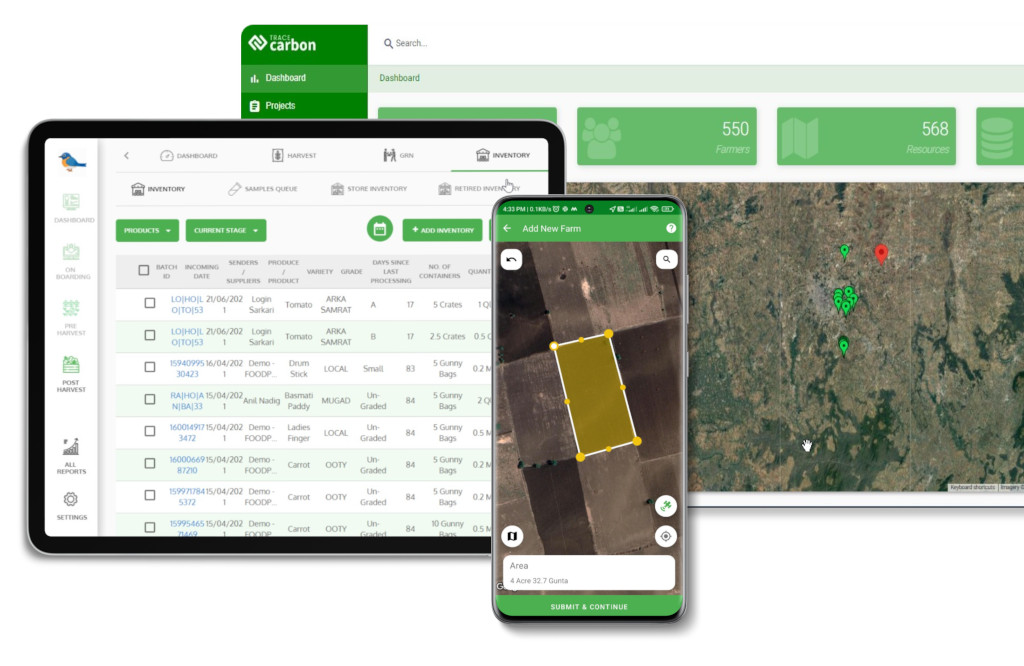Contact: +91 99725 24322 |
Menu
Menu
Quick summary: Struggling with supplier data gaps under EUDR? Learn how to identify, fix, and prevent compliance breakdowns—before they cost you buyers or block your shipments.

You may have the systems, the paperwork, and the processes—but if your supplier data gaps in EUDR compliance aren’t addressed, your product can still be blocked from the EU market. That’s because EUDR shifts accountability downstream, making you responsible for verifying legality, deforestation-free sourcing, and geolocation—even if your supplier won’t share the necessary documentation.
Even the best EUDR compliance strategy fails if your supplier won’t cooperate.
In this blog, we’ll break down how to spot weak links in your data trail, how to close supplier data gaps before they become export risks, and how to future-proof your compliance workflows—so your business doesn’t pay the price for someone else’s silence.
Key Takeaways
You’ve probably asked yourself—or heard from your team— “Don’t our suppliers already have certifications? Isn’t that enough?”
Unfortunately, under EUDR, the answer is: not even close.
The regulation doesn’t just want proof that your product is “sustainable”—it wants precise, plot-level traceability all the way back to the farm. That means your supplier data needs to be both granular and verifiable.
Let’s break it down
You need plot-level coordinates (not just region or village) for every source farm.
You need documentation to prove the product was legally produced. That may include:
It’s not enough to know where your cocoa or coffee came from.
You also need to show how that crop moved through the chain:
Every supplier linked to your product must be identified and accountable:
This becomes essential when audits happen or when you’re referencing existing DDS (Due Diligence Statements) upstream.
“Even FSC or RSPO certified suppliers must provide traceable, plot-specific data.”
Yes—certification helps. But certificates alone don’t fulfill EUDR requirements.
The regulation wants data, not just stamps. You’ll still need the geo-coordinates, legality docs, and traceability records to back it up.
And yes—our platform can help.
It automates this entire process: collects, validates, and links your supplier data—so you can submit DDS with confidence, not guesswork.
Want to see how it works? Book a quick walkthrough today.
If you’re deep in the process of EUDR readiness, you’ve probably noticed something frustrating:
Your biggest bottlenecks aren’t happening in your office—they’re upstream, with your suppliers.
The problem? Most supplier data pipelines weren’t built for traceability at the level EUDR demands. You can’t just ask for a certificate or an address anymore. You need plot-level coordinates, legal paperwork, and proof that the product didn’t touch deforested land. That’s a high bar—especially if your supply chain spans multiple smallholders, aggregators, or countries.
Here are the most common supplier data gaps we’re seeing across agri-exporters and food brands—and how they can quietly sabotage your compliance efforts
“Village-level” isn’t enough.
The EU wants the exact coordinates of the farm or forest plot—submitted as GeoJSON files. If your supplier sends PDFs or vague regional descriptions, your DDS is at risk.
Tip: Still over 25 MB? Use the multi-DDS workaround
No land title? No DDS.
EUDR requires evidence that the product was grown or harvested legally. That could be:
But many suppliers don’t know what qualifies—or hesitate to share due to fear or outdated systems.
You might know your direct supplier. But do you know who they’re buying from?
When data stops at the first supplier, your entire DDS trail goes dark.
That’s especially risky if:
This breaks the traceability chain—and you’re held accountable, not them.
Land and consent-related documentation—like FPIC (Free, Prior and Informed Consent)—is sensitive.
Suppliers often:
Our platform is fully GDPR-compliant and ISO 27001-certified, ensuring that all data—especially consent-related and land ownership records—is handled with strict confidentiality, traceability, and security protocols.
Field staff still using pen and paper?
That’s not just inefficient—it’s dangerous for compliance timelines. Manual workflows cause:
One slow upload can delay your DDS submission—and risk missing your shipping window.
You’ve done your part—set up traceability systems, aligned your team, and prepared to submit your DDS. But then the supplier data doesn’t arrive. Or worse—it’s wrong, incomplete, or buried in someone’s inbox.
Here’s the harsh reality under EUDR:
One missing plot coordinate or legality document can break your entire compliance chain.
And the cost? It’s not just administrative. It’s commercial. It’s reputational. It’s about trust.
EUDR isn’t flexible.
If your DDS is missing required information—like a GeoJSON file, FPIC declaration, or traceability link—it gets rejected.
Once your product reaches the EU, there’s no room for guesswork.
Customs may flag or hold your shipment if:
EU buyers are now under pressure to only work with verified, traceable sources.
If they can’t rely on your DDS, they may walk away—or shift to a supplier who guarantees transparency.
EUDR enforcement will involve audits and investigations.
Incomplete supplier data puts you at risk of:
If you’ve made it this far, you already know the biggest EUDR risk isn’t deforestation itself—it’s the incomplete or inaccessible data about it. That missing supplier document, GPS coordinate, or traceability gap? That’s what delays your DDS, blocks your shipment, or costs you buyer trust.
Here’s the good news: you don’t need more spreadsheets or emails to fix it.
You need tech that’s built for traceability, speed, and scale.
Because let’s face it—your goal isn’t just compliance.
It’s about protecting your market access, keeping buyers confident, and avoiding last-minute firefighting every time a shipment leaves your warehouse.
Forget chasing PDFs and WhatsApp screenshots. Modern platforms let you:
Try our EUDR Compliance Platform
The EU doesn’t want district-level data.
They want plot-level precision—down to the coordinates of each farm.
With geo-mapping tools and mobile data collection:
And you can access it all before the product ever moves.
Want to see how one tire company turned EUDR from a roadblock into a competitive edge?
Read the case study to learn how they digitized rubber sourcing, mapped supplier plots, and secured EU market access—without disrupting operations.
No more DDS errors. No formatting mistakes. No missing files.
Smart platforms can:
The last mile of compliance is often your least connected suppliers.
But tech is closing that gap too—with:

This isn’t just inclusive—it’s practical. Because compliance only works if everyone, everywhere can participate.
Supplier data gaps may seem like minor delays today—but under EUDR, they can become shipment-stoppers, audit red flags, and broken buyer relationships tomorrow. The truth is, compliance isn’t just a documentation task—it’s a visibility challenge. And it starts (and often ends) with how much you can trust your supplier data.
With the right technology, you can turn fragmented, offline processes into a clear, traceable, and audit-ready supply chain. Don’t wait for enforcement or rejection to force the shift—fix the gaps now and turn compliance into your competitive advantage.
You can’t submit a valid DDS, which means your product can’t enter the EU market.
You’ll need to onboard suppliers into traceability tools or find alternative sources.
No—certification alone isn’t sufficient.
You still need plot-level geolocation, legality documents, and traceability proof.
Use mobile-based tools to capture GPS points or plot boundaries on-site.
These tools can generate GeoJSONs even offline, ready for DDS uploads.
